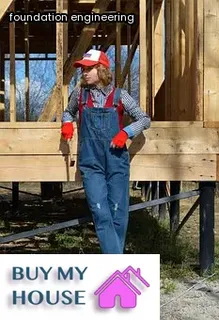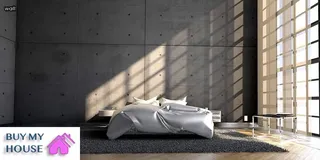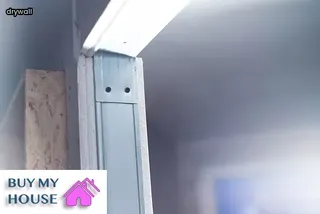Foundation settling is a natural occurrence that happens to most homes over time. It is caused by changes in the soil around the foundation, such as erosion and weathering, which can cause the ground to shift and settle unevenly.
In addition, poor drainage can lead to water pooling around the foundation, causing it to sink or settle. Another common cause of settlement is expansive soil, which expands when wet and shrinks when dry.
In some cases, inadequate support from footings or piers can also contribute to foundation settling. Additionally, load bearing walls, like retaining walls or other structures, may not be properly supported and could put added pressure on the foundation causing it to settle.
Finally, improper compaction of soils around the home’s perimeter can also lead to foundation settling over time. All these issues can easily be addressed with proper maintenance and inspections of your home’s foundation so that any problems are caught early on before they become more serious issues.

The differentiation between foundation problems and house settling is an important one to understand. Foundation settling typically occurs in older homes where the soil underneath has shifted due to natural causes such as erosion or changes in water levels.
This can lead to the home's foundation gradually sinking, which often results in cracks appearing in walls and floors, uneven door frames, and windows that are difficult to open and close. On the other hand, foundation problems are usually caused by poor construction techniques or inadequate materials used during the building process.
Signs of foundation problems include large gaps between walls and floors, cracking along exterior walls of a structure, doors and windows that stick or jam when opened or closed, and water pooling around the foundation. Understanding these two issues separately is essential for property owners to properly assess the condition of their home’s foundation and correctly identify any issues that may need to be addressed.
Identifying signs of foundation problems can be difficult as they often mimic the symptoms of normal foundation settling. It is important to understand the difference between the two in order to identify and address potential issues with your home’s foundation.
Foundation settling is a natural process that occurs when a home has been established on soil that shifts over time, causing it to settle and potentially create visible cracks in walls or ceilings. On the other hand, foundation problems can be caused by a variety of issues such as improper installation, expansive soils, poor drainage or plumbing leaks which can cause more serious damage than just settling.
When addressing a potential issue with your home’s foundation it is important to recognize the differences between foundational settling and foundational problems so you can take appropriate action and ensure the safety of your home.

Evaluating the extent of foundation settling requires an inspection by a qualified professional. The first step is to assess the structure of the home and identify any visible signs that may indicate settling.
This includes cracks in walls, floors, or ceilings, as well as doors and windows that are difficult to open or close. In addition, sloping floors and gaps between walls and floors can also be indicative of foundation settling.
If these signs are present, it is important to determine the cause of the settling and whether it is simply due to age or a more serious underlying problem. To do this, experts use specialized tools such as levelers, plumb lines, and tape measures to measure changes in elevation at various points around the home.
They may also use ground penetrating radar scanners to detect any discrepancies below the surface that could be causing foundation settlement. By evaluating the extent of foundation settling, homeowners can get an accurate understanding of their home's condition and take appropriate action if necessary.
When it comes to addressing foundation issues, the first step is to identify the problem. Foundation settling is a natural process that may cause slight cracks in walls and floors, but should not cause structural damage or pose a safety risk.
If foundation problems are more severe, they can be caused by water leakage or inadequate drainage, excessive soil moisture, weak soil structure, or poor construction techniques. Solutions to address these issues include proper waterproofing and drainage of the area around the foundation, soil stabilization with compaction grouting or piers, and repairing any visible cracks.
Additional solutions may include underpinning with helical piles if there is significant foundation settlement, or replacing sections of the foundation wall if there is extensive damage. Working with a qualified contractor can help determine which solution will best address your specific needs and provide the best long-term results for your home's foundation.

Foundation settlement and foundation problems can be difficult to distinguish between, but understanding the difference is essential in determining effective solutions. One of the most common causes of house settlement is poor soil conditions, particularly those with high clay content or expansive soils that are prone to heaving and shrinking.
Poor drainage around a home's foundation can lead to water pooling near the base, causing it to settle over time. Poor construction practices can also result in insufficient support for the foundation, resulting in settling.
Inadequate steel reinforcements or inadequate footings are some of the most common mistakes made during construction and may contribute to house settlement. In addition, landscaping changes such as grading that directs water toward the home's foundation may increase the risk of settlement.
Taking steps to protect against such causes can help minimize the risk of foundation settlement and associated damage.
Repairing foundations can be costly, and the cost implications of doing so will depend on the type of foundation problem. Foundation settling, which is when a foundation’s soil compacts over time and causes a sinking effect, is typically less expensive to repair than a full-blown foundation problem.
Foundation problems are more serious issues that require specialized expertise and can range from structural damage due to water infiltration to tree root growth pushing up against the foundation walls. When evaluating the cost implications of repairing foundations, it is important to understand the difference between settling and other types of problems in order to determine what type of repair is necessary.
In addition to understanding the difference between these two types of foundations, it is also important to consider factors such as soil type and climate conditions in order to get an accurate estimate on repair costs.

When it comes to repairing a foundation, there are both pros and cons. On the pro side, repairing a foundation can help restore the structural integrity of your home and can add value to your property.
It is also a cost-effective solution in the long run since it can prevent further damage from occurring. On the con side, foundation repairs can be costly and often require specialized expertise.
Furthermore, if your home has experienced significant settlement or other damages, even after repair work is done, it may still need to be monitored for signs of future problems. Ultimately, it is important to understand the difference between foundation settling and foundation problems in order to make an informed decision about whether or not you should proceed with repairs.
Investing in professional consultation and guidance for foundation problems can be beneficial in a number of ways. Consulting with experienced professionals can provide an understanding of what the problem is, how it can be addressed, and what options are available to you.
Professional guidance can help ensure that your foundation is repaired correctly so that it is strong and stable long-term. Having an expert inspect the structure of your property can help identify potential problems early on so that they don’t become severe or costly to repair later on.
Professionals with experience in foundation settling vs. foundation problems can offer advice on the best course of action to take, including which materials or techniques should be used in the repair process.
Additionally, getting a second opinion or additional support from a professional may give you peace of mind when making important decisions about your home’s foundation.

With proactive interventions, homeowners can take steps to prevent future foundation problems. It is important to understand the difference between foundation settling and foundation problems because settlement is normal and typically not a cause for concern, while foundation problems need to be addressed quickly.
To prevent the latter, homeowners should inspect the exterior of their home regularly for signs of shifting or cracks in walls and windows, which could indicate a problem with the foundation. Additionally, they should check their gutters and downspouts to ensure that water is being directed away from the house's foundation.
If there are any signs of standing water near the home's base, homeowners should install drainage systems or regrade soil around the house so that water runs away from it. Without regular maintenance and inspections, small problems can become larger ones if left unchecked.
When it comes to the long-term impact of unaddressed foundation issues, it can be difficult to distinguish between foundation settling and actual foundation problems. Foundation settling is a natural occurrence caused by soil shifting over time, while foundation problems are typically caused by water damage or poor workmanship when constructing the foundation.
In either case, it is important to properly inspect and address any issues in order to prevent future structural damage. Ignoring potential problems can lead to costly repairs down the line, including the need to replace foundational walls due to cracks and buckling caused by excess moisture, as well as bowing or uneven floors due to settlement.
It is also important to take into consideration any warning signs that may indicate an issue with your home’s foundation such as gaps in windows and door frames, sloping floors, cracking walls or ceilings, and musty odors coming from crawl spaces. Taking action early will help save money in the long run and ensure that your home remains structurally sound for years to come.

Having a structurally sound home is essential for the safety of you and your family. Regular foundation inspections are necessary to ensure that any issues with settling or other problems are identified and addressed quickly.
A professional inspection will determine whether there is an issue with the foundation, including checking for signs of movement or cracking in the walls, floors, and ceiling. In addition, they will examine the soil surrounding the foundation to ensure it is not causing any issues such as subsidence or erosion.
If any problems are found, it is important to act quickly before they become more extensive and costly to repair. An experienced inspector can help you understand the difference between settling foundations and actual foundation problems so that you can make an informed decision about how best to proceed with repairs.
Working with a reliable contractor who has experience dealing with foundation issues can also be beneficial in ensuring your home remains structurally sound for years to come.
It is important to understand the difference between foundation settling and foundation problems in order to properly address any issues with your home’s foundation. It can be difficult to tell the difference between these two without proper inspection.
Foundation settling occurs when the soil beneath a foundation shifts, resulting in uneven support and ultimately causing cracks in the walls and floors of a home. Foundation problems, on the other hand, are caused by structural damage which can be a result of poor construction or materials, inadequate drainage, improperly compacted soil, or water damage.
To identify foundation settling, look for horizontal cracks in walls or flooring that may have formed over time due to shifting ground levels. Vertical cracks are more likely indicative of a structural issue such as water damage or improper installation of plumbing.
If you suspect your home is experiencing either settling or foundational issues, contact an experienced inspector who can assess the situation and provide you with an appropriate plan for repair or reinforcement.

Foundation settling is a natural process and is considered to be normal. It is due to the movement of soil and can occur in any type of foundation.
This type of settling may cause slight cracks in floors and walls, but it does not require major repairs. Foundation problems are more serious than foundation settlement and often need to be addressed by an experienced professional.
These issues are usually caused by poor construction, drainage issues, improper fill soils, expansive soils or extreme weather conditions. In some cases, these issues can lead to structural damage if left untreated.
Understanding the difference between normal settling and foundation problems is essential for homeowners when making decisions about needed repairs.
Foundation settling is a natural and expected process for any structure, but it’s important to understand how much settling is acceptable before you start worrying about potential problems. Foundation settling occurs when the soil beneath the foundation begins to compress due to weight being placed on it, which causes the foundation to slowly sink into the ground.
In general, an acceptable amount of foundation settling is typically around 1 inch or less over a span of 10 years. If your foundation has settled more than an inch within that time frame, then you should consider consulting with a professional to evaluate your home for potential structural issues and repair any damage that may have occurred from excessive foundation settling.
Understanding how much settlement is acceptable and taking preventative measures can help extend the life of your home’s foundation and ensure its stability in the long run.
If you notice that a house's walls, floors, and ceilings are out of level or have large cracks in them, this could be a sign that the foundation is settling or having problems. Other signs may include doors and windows that don't close properly, gaps around window frames and door frames, and separation between walls and ceilings or floors.
If you can see daylight coming through the walls or floors near the foundation of the house, this might mean there are serious issues with the foundation. Additionally, if your house has an attached garage and you can feel movement in the floor when vehicles enter or exit it, this could also be a sign of foundation trouble.
If you suspect that a house has foundational issues, it is important to seek help from a professional immediately to avoid any further damage to your home.